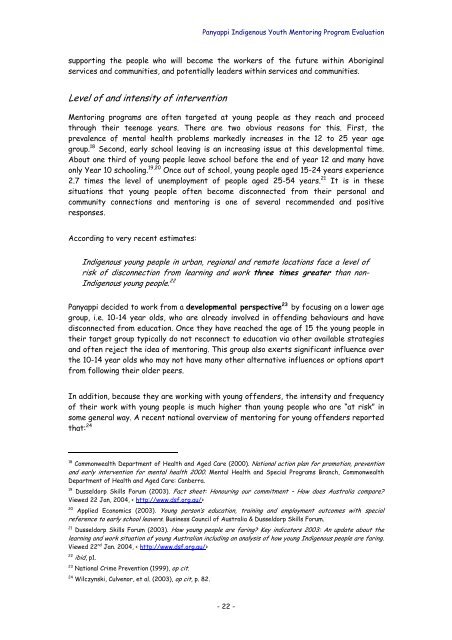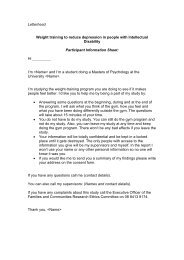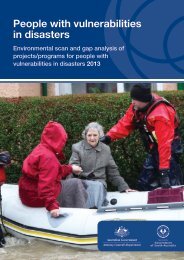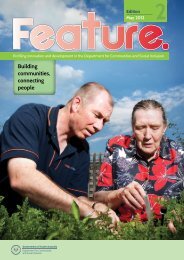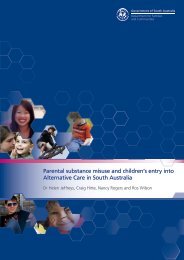Panyappi Indigenous Youth Mentoring Program Evaluation
Panyappi Indigenous Youth Mentoring Program Evaluation
Panyappi Indigenous Youth Mentoring Program Evaluation
You also want an ePaper? Increase the reach of your titles
YUMPU automatically turns print PDFs into web optimized ePapers that Google loves.
<strong>Panyappi</strong> <strong>Indigenous</strong> <strong>Youth</strong> <strong>Mentoring</strong> <strong>Program</strong> <strong>Evaluation</strong><br />
supporting the people who will become the workers of the future within Aboriginal<br />
services and communities, and potentially leaders within services and communities.<br />
Level of and intensity of intervention<br />
<strong>Mentoring</strong> programs are often targeted at young people as they reach and proceed<br />
through their teenage years. There are two obvious reasons for this. First, the<br />
prevalence of mental health problems markedly increases in the 12 to 25 year age<br />
group. 18 Second, early school leaving is an increasing issue at this developmental time.<br />
About one third of young people leave school before the end of year 12 and many have<br />
only Year 10 schooling. 19,20 Once out of school, young people aged 15-24 years experience<br />
2.7 times the level of unemployment of people aged 25-54 years. 21 It is in these<br />
situations that young people often become disconnected from their personal and<br />
community connections and mentoring is one of several recommended and positive<br />
responses.<br />
According to very recent estimates:<br />
<strong>Indigenous</strong> young people in urban, regional and remote locations face a level of<br />
risk of disconnection from learning and work three times greater than non-<br />
<strong>Indigenous</strong> young people. 22<br />
<strong>Panyappi</strong> decided to work from a developmental perspective 23 by focusing on a lower age<br />
group, i.e. 10-14 year olds, who are already involved in offending behaviours and have<br />
disconnected from education. Once they have reached the age of 15 the young people in<br />
their target group typically do not reconnect to education via other available strategies<br />
and often reject the idea of mentoring. This group also exerts significant influence over<br />
the 10-14 year olds who may not have many other alternative influences or options apart<br />
from following their older peers.<br />
In addition, because they are working with young offenders, the intensity and frequency<br />
of their work with young people is much higher than young people who are “at risk” in<br />
some general way. A recent national overview of mentoring for young offenders reported<br />
that: 24<br />
18 Commonwealth Department of Health and Aged Care (2000). National action plan for promotion, prevention<br />
and early intervention for mental health 2000. Mental Health and Special <strong>Program</strong>s Branch, Commonwealth<br />
Department of Health and Aged Care: Canberra.<br />
19 Dusseldorp Skills Forum (2003). Fact sheet: Honouring our commitment – How does Australia compare?<br />
Viewed 22 Jan, 2004, < http://www.dsf.org.au/><br />
20 Applied Economics (2003). Young person’s education, training and employment outcomes with special<br />
reference to early school leavers. Business Council of Australia & Dusseldorp Skills Forum.<br />
21 Dusseldorp Skills Forum (2003). How young people are faring? Key indicators 2003: An update about the<br />
learning and work situation of young Australian including an analysis of how young <strong>Indigenous</strong> people are faring.<br />
Viewed 22 nd Jan. 2004, < http://www.dsf.org.au/><br />
22 ibid, p1.<br />
23 National Crime Prevention (1999), op cit.<br />
24 Wilczynski, Culvenor, et al. (2003), op cit, p. 82.<br />
- 22 -


